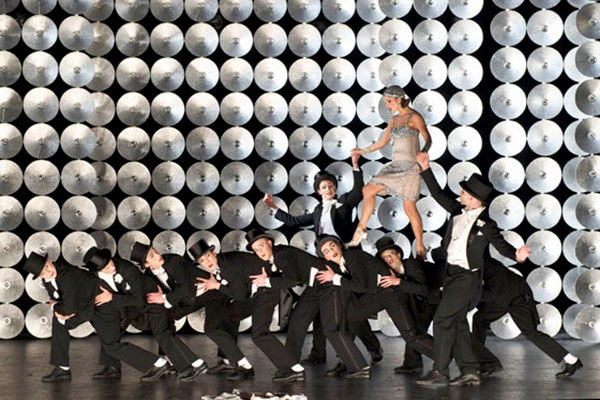 |
|
Poster of Paris-New York-Paris. [Photo provided to chinadaily.com.cn] |
A journey back in time orchestrated by Petter Jacobsson, Paris-New York-Paris, contains three dance pieces: Corps de Ballet (2014), Sounddance (1975) and Relache (1924).
As a dance journey back in time with an artistic statement of modernity, the dance is an "ancient" piece with a brilliant contemporary rendering.
Jacobsson, art director of the Center Choregraphique National (CNN) – Ballet de Lorraine, which produced this dance, says the dance is innovated to make it an immersive piece.
In an exclusive interview with China Daily website this June, Jacobsson talked about how the dance got its name, why the dance has kept its originality through half a decade and what qualities he looks for in CNN dancers.
Below are excerpts from the interview.
How did you get the name Paris-New York-Paris, how is the dance related to these two cities?
The name comes from the idea of "where do things come from". So in Paris in the 1910s, 1920s, it was a happening place for dance. And a lot of modern dance was born during this time, Paris was like the center of arts at that time. And then the center of art changed to New York, because the war came, and a lot of the artists moved to New York, including French artists like Duchamp. And it has influenced a generation of artists including John Cage. So in the 50s till the 80s, a lot of things were blooming in New York. And why Paris again? Because the center moved back, New York was not it used to be. But honesty, there's not a center back then, art has got to pretty much everywhere. But for our program, we have one piece that was created in Paris in 1924, and one piece in New York in 1975, and the other created in 2014 in Paris. So this is why it was called Paris-New York-Paris.
Among the three pieces, which one makes the central idea of the dance?
I would say the whole piece was based on Relache. A groundbreaking piece, because it break all the rules during that time. So it was not a story, everything is just happening. So it's an early thought of presenting dance without a story. And there's also a little piece in Relache, which has no music. It was also revolutionary at that time. And later on we also talked about organized chaos, it was an idea of music separate from dance, so dance and music doesn't have to be performed together.
|
|
|
|
|
|
|
|
